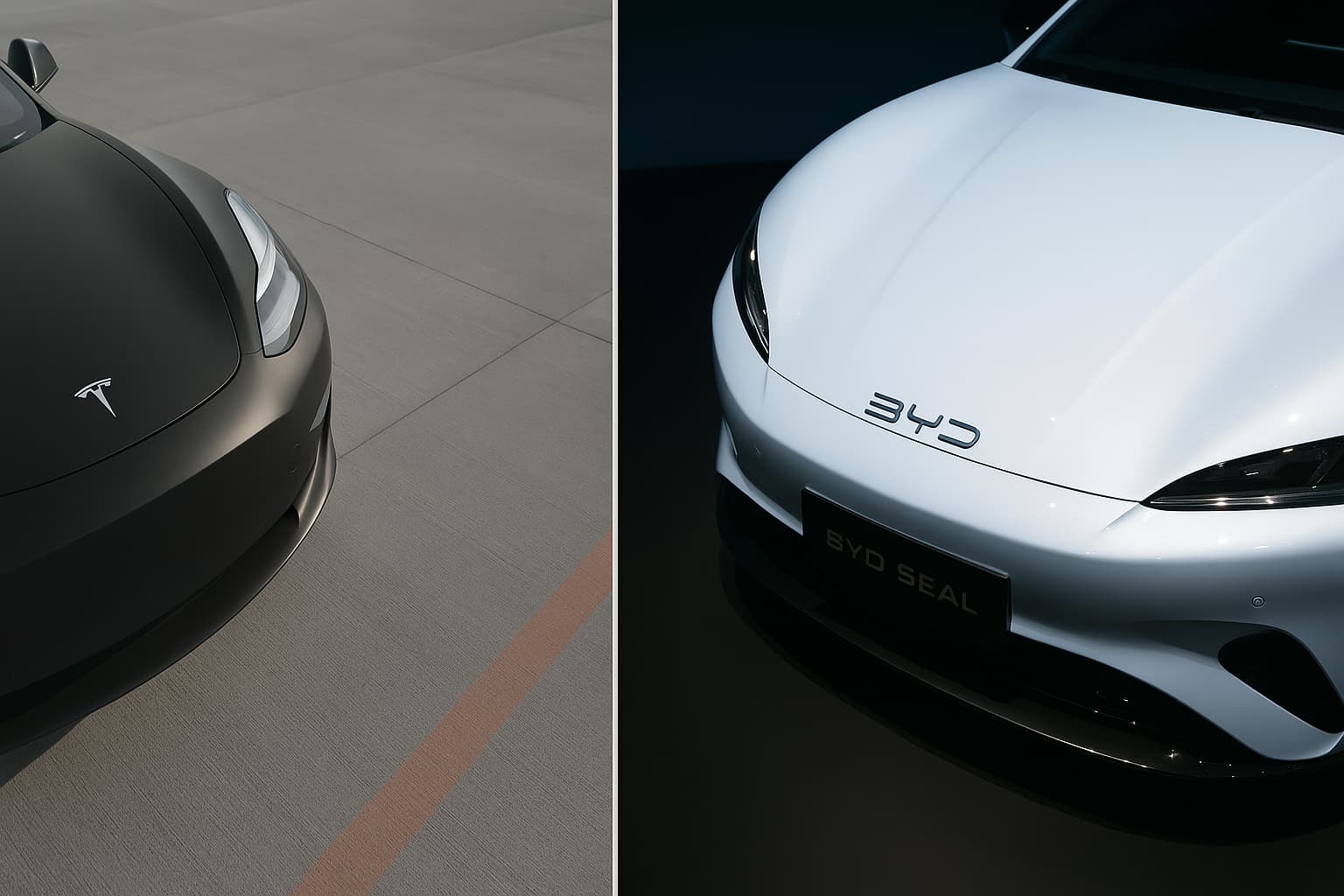BYD is indeed posing a significant challenge to Tesla in the electric vehicle (EV) market, and several factors indicate that BYD is “eating up” Tesla’s market share and potentially its leading position. Here’s a breakdown of how this is happening:
1. Sales Volume and Growth:
- BYD Surpassing Tesla: In 2024, BYD sold significantly more vehicles globally than Tesla. BYD delivered 4.27 million vehicles, more than double Tesla’s 1.79 million. This includes both fully electric vehicles (BEVs) and plug-in hybrid electric vehicles (PHEVs).
- Higher Sales Growth: BYD experienced a substantial 29% sales jump in 2024, while Tesla’s annual deliveries declined for the first time by 1.1%.
- BEV Sales Race: While Tesla narrowly maintained its lead in battery electric vehicle (BEV) sales in 2024, the gap is minimal, with BYD showing a 12% growth in BEV sales compared to Tesla’s 1% drop. Many analysts predict BYD will overtake Tesla in pure EV sales in 2025 if current trends continue.
2. Market Share:
- Global Leader: BYD has already overtaken Tesla to become the best-selling BEV brand globally in the fourth quarter of 2024.
- Dominance in China: BYD commands a massive 32% share of China’s new energy vehicle (NEV) market, while Tesla holds a much smaller share of 6.1%. China is the world’s largest auto market, giving BYD a significant advantage.
- Expanding International Presence: While the majority of BYD’s sales are currently in China, its international expansion is accelerating. Exports accounted for about 10% of BYD’s total shipments in 2024, with increasing presence in regions like India, Brazil, Southeast Asia, and Europe.
3. Pricing and Product Strategy:
- Affordable Pricing: BYD offers a wider range of vehicles, including more affordable options compared to Tesla. Their entry-level models in China start at just over $10,000, making EVs accessible to a broader consumer base.
- Hybrid and EV Strategy: BYD’s strategy of offering both fully electric and plug-in hybrid vehicles caters to consumers who may not be ready for full EV adoption, providing a smoother transition.
- Diverse Model Lineup: BYD has a broader model lineup across different segments, including compact hatchbacks (Dolphin), mid-size sedans (Seal), premium sedans (Han), and SUVs (Tang), offering more choices to consumers.
4. Technological Advancements:
- Battery Technology: BYD is a major battery manufacturer and has developed the Blade Battery, a lithium iron phosphate (LFP) battery known for its safety and improved energy efficiency. They are also innovating in fast-charging technology, with their Super e-Platform enabling up to 470 kilometers of range in just five minutes and peak charging speeds of 1,000 kW. BYD plans to introduce all-solid-state batteries by 2027.
- Vertical Integration: BYD’s vertically integrated supply chain, controlling everything from battery production to final assembly, gives it a cost advantage and more control over its production and pricing. Reports suggest BYD’s cars cost roughly 15% less to produce than Tesla vehicles built in the US or Europe.
- New Hybrid Technology: BYD recently unveiled its fifth-generation plug-in hybrid technology, achieving a very low fuel consumption rate and a long driving range of up to 2,100 kilometers when combining electric and gasoline power.
- Advanced Platforms: BYD’s e-Platform 3.0 is designed for efficiency, safety, and performance, integrating key EV components for higher range and faster charging. They are also developing intelligent suspension systems (Disus) and advanced off-road hybrid platforms (DMO).
5. Challenges for Tesla:
- Struggles in Key Markets: Tesla has seen sales declines in China and Europe, facing increasing competition from local EV makers and more affordable options.
- Limited Model Diversity: Tesla’s lineup is less diverse compared to BYD, which offers vehicles across various segments.
- Slower Innovation in New Segments: Some analysts suggest Tesla has been slower to innovate in new segments and faces pricing pressure.
- Regulatory Hurdles: Tesla has faced delays in entering markets like India due to negotiations over import duties and local production requirements, giving BYD a head start.
In conclusion, BYD’s strong sales growth, significant market share in China, expanding global presence, competitive pricing, technological advancements, and vertical integration are all contributing to its ability to gain ground on Tesla and potentially become the dominant force in the global EV market. While Tesla remains a strong player with its brand recognition and technology, it faces increasing pressure from BYD’s multifaceted strengths.







